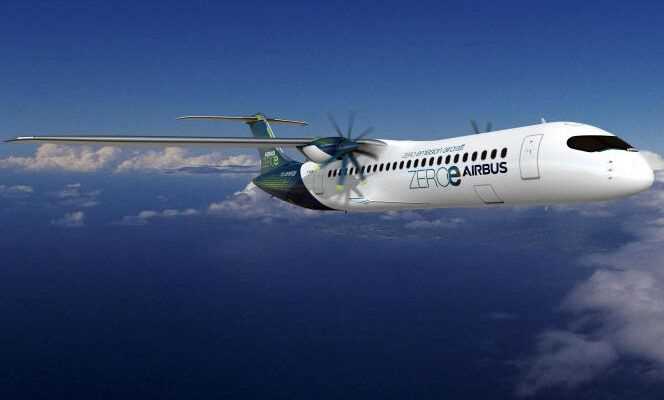It promises to be a very long long distance race. If the first zero-emission, hydrogen or electric aircraft is not expected before 2035, both air transport players and aeronautics manufacturers cannot waste a second. Gathered on the occasion of the Paris Air Forum, Monday, June 21, at the Air and Space Museum in Le Bourget, the leaders of the sector have mapped out the ideal framework for the development of a real ecosystem that will allow the emergence of the new generation air transport. And to hasten this movement, Thierry Breton, European Commissioner responsible in particular for industrial policy, called for the creation of a “Alliance for zero-emission aviation by the end of the year ”. It would bring together, according to him, “All the players in the future ecosystem ” aeronautics, whether private or public.
The launch of a zero emission aircraft is not only “An industrial subject, but also a regulatory subject”, recalled Guillaume Faury, CEO of Airbus. It is therefore necessary to set a clear framework for the use of commercial aircraft operating on 100% of fuels derived from biomass, known as biofuel, or from hydrogen. For now, recalled Patrick Ky, president of the European Aviation Safety Agency (EASA), the devices are only certified to fly with 50% biofuel. A limit very far from being reached by airlines around the world. Today, “The concrete use of sustainable fuels by companies does not exceed 0.1%”, notes Olivier Andriès, general manager of engine manufacturer Safran.
“Agnostic” engine
Too expensive, too rare, the companies defend themselves. “Two to three times more expensive than kerosene”, even specifies Philippe Petitcolin, ex-boss of Safran, who initiated the next generation engine. With such a price differential, “It will be necessary that all the actors of the air transport obey the same rules”. No way, he adds “For example to require Air France to use 25% to 30% biofuel”, when its competitors would not use it or in a much smaller proportion.
To run their devices with sustainable fuels, or later with hydrogen from renewable energies, companies also need to have refueling systems at all of the airports served. Today, it is not! While projects, financed in particular by the government’s aeronautical recovery plan (endowed with 1.5 billion), are being carried out here and there to test different biofuel or hydrogen refueling systems, the sector is still far from the mark. . And even if Air Liquide, Airbus and Groupe ADP announced a partnership on Monday, with the objective of “ prepare for the arrival of hydrogen in airports in 2035 “, this date remains very ambitious, blows Mr. Petitcolin. At this time, it is necessary, according to him, rather to table “On an airplane operating with much less fuel-consuming engines. That is to say with a reduction in consumption of 20% to 25% “.
You have 27.94% of this article left to read. The rest is for subscribers only.
